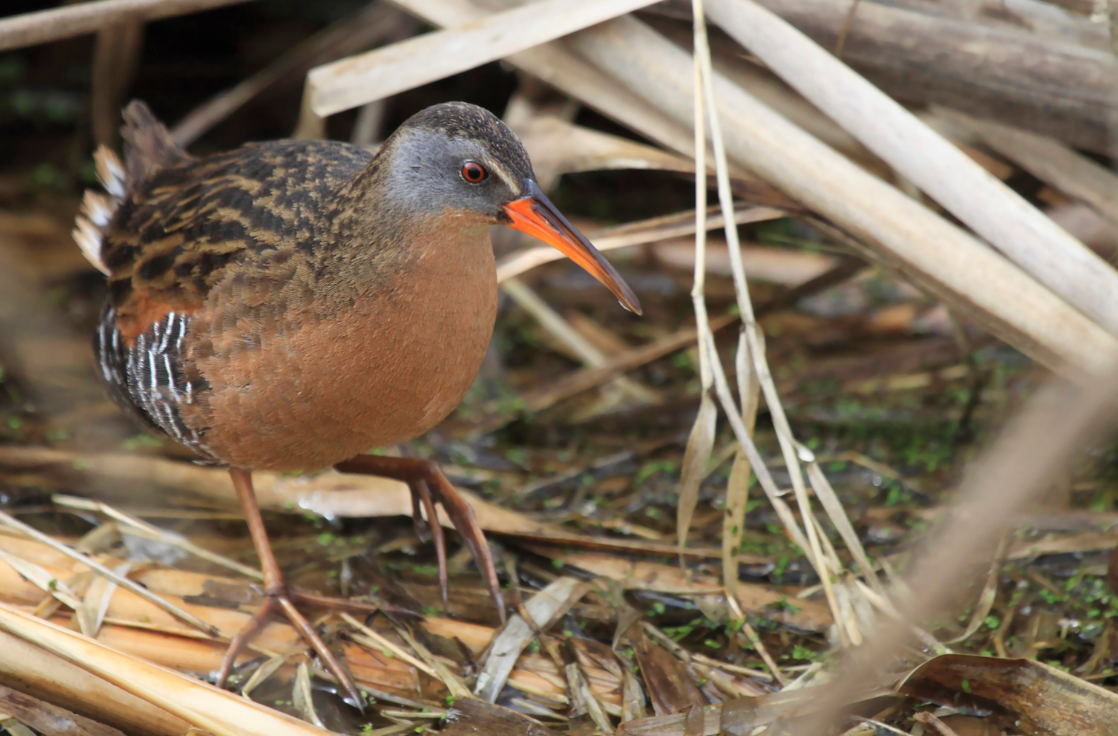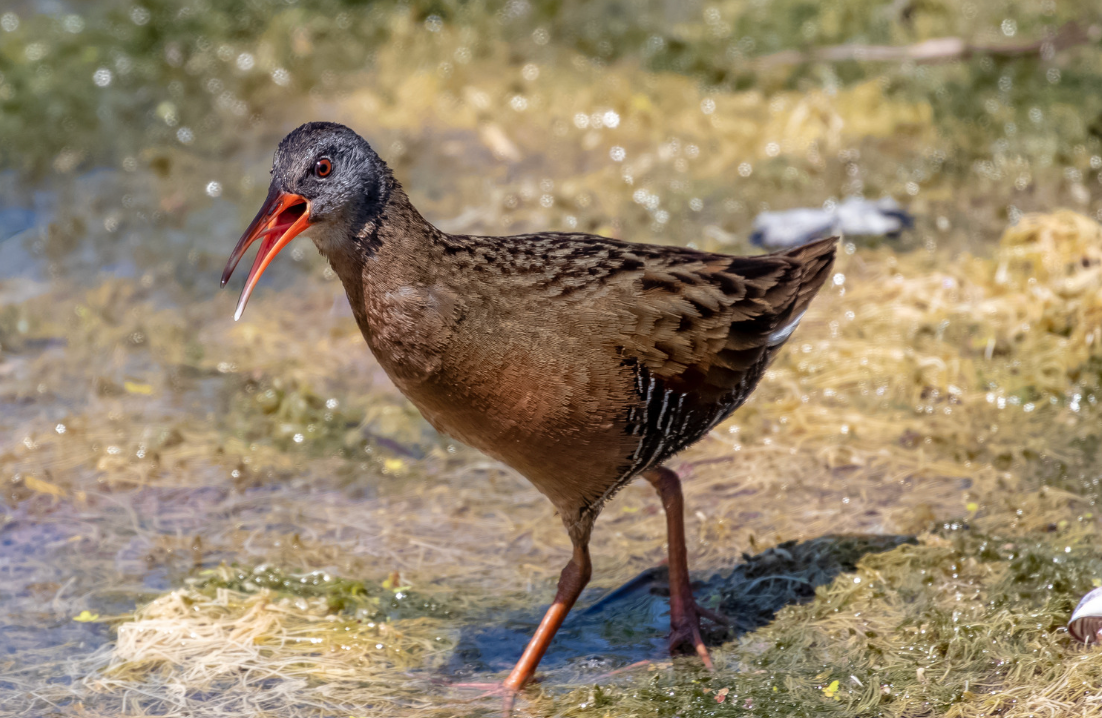The Virginia Rail is a secretive wetland bird known for its slender body, long toes, and ability to move stealthily through dense vegetation. Found in marshes and wetlands across North America, these birds play an essential role in maintaining healthy wetland ecosystems by controlling insect populations and dispersing seeds.
Virginia Rails measure about 8-10 inches in length with a wingspan of 12-15 inches. Their plumage is a mix of brown, gray, and rust, providing excellent camouflage among reeds and cattails. They have a distinctive long, slightly curved bill, which they use to probe in mud for insects, small crustaceans, and aquatic plants.
Virginia Rails are primarily solitary and are most active at dawn and dusk. During the breeding season, males perform elaborate displays and vocalizations to attract mates. Females build well-hidden nests among dense vegetation, where they lay 6-12 eggs. Both parents care for the young, which are precocial and can forage shortly after hatching.
Natural predators include raccoons, foxes, and birds of prey. Human-related threats such as habitat loss, pollution, and climate change pose significant risks to Virginia Rail populations. Despite these challenges, their elusive nature and adaptability have helped them survive in many regions.

For your safety and the well-being of wildlife, please observe animals from a distance and avoid touching or disturbing them. If you encounter an animal that appears injured or in distress, contact a licensed wildlife rescue organization for guidance before intervening.
Found An Animal? Not sure how to help a wild animal in need? Learn when to step in, who to call, and how to help safely.
Did You Know?
- Virginia Rails can compress their bodies to fit through narrow spaces in dense vegetation.
- They are strong swimmers and can even dive to escape predators.
- Virginia Rails have long toes that help them walk on floating vegetation without sinking.
- They are known for their distinctive grunting calls, which are often heard at night.
- Unlike most birds, Virginia Rails can run almost immediately after hatching.
- Their diet changes seasonally, shifting from insects in the summer to seeds and aquatic plants in the winter.
- Virginia Rails migrate at night and are rarely seen during migration.
- Apart from the main nest, Virginia rails build numerous “dummy nests.” Most probably, it’s a tricky way to save their clutch from predators.
- Virginia rail chicks are born fully developed and can swim very soon after hatching.
Problems Faced In The Wild
- Habitat Loss: Wetland drainage and development reduce critical nesting and foraging areas.
- Pollution: Contaminants in water sources harm Virginia Rails and reduce prey availability.
- Climate Change: Rising temperatures and altered water levels affect breeding success.
- Human Disturbance: Recreational activities in wetland areas can disrupt nesting and feeding.
- Predation: Eggs and chicks are vulnerable to predators such as raccoons and foxes.
- Invasive Species: Non-native plants and animals can degrade wetland habitats.
Tips For Cohabitation
- Preserve Wetlands: Support conservation efforts to protect and restore natural wetland habitats.
- Reduce Water Pollution: Minimize the use of fertilizers and chemicals that can contaminate waterways.
- Avoid Disturbing Wetlands: Keep a respectful distance from nesting areas during the breeding season.
- Participate in Wetland Cleanups: Help remove debris and invasive species from wetland areas.
- Educate Others: Share the importance of wetlands and the wildlife they support.
- Support Wetland Conservation Programs: Advocate for policies that protect wetland ecosystems.



